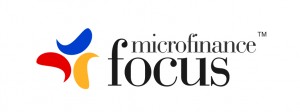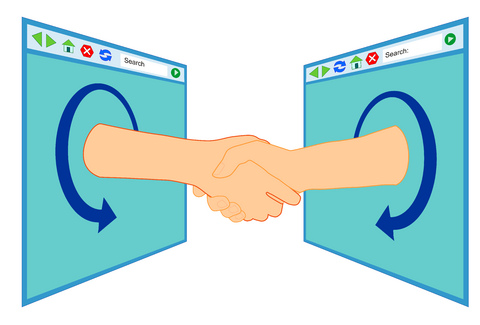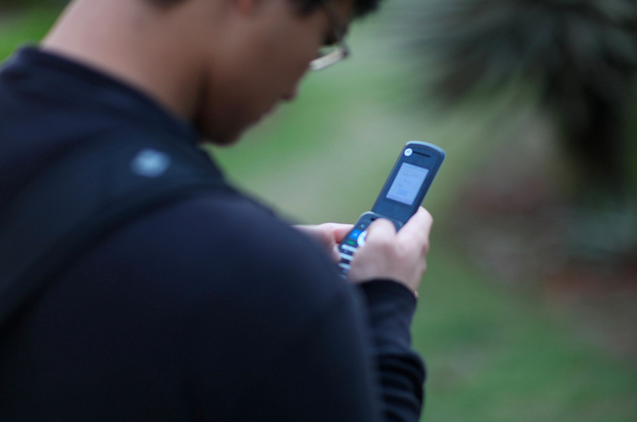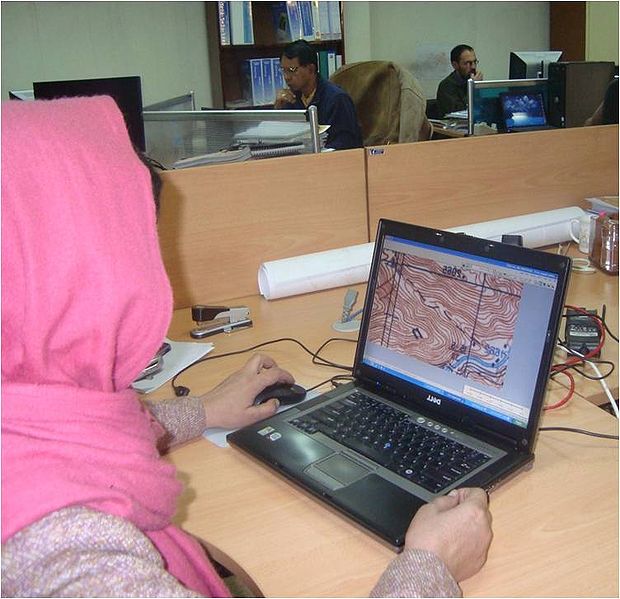Taking Advantage of Digital Finance to Expand Financial Inclusion
9:00 to 10:30 CST: Digital finance has swept across the world across all economic sectors, and now presents a potentially game-changing opportunity to more effectively reach the world’s unbanked populations. Already, new innovations in digital finance aimed at reducing costs and achieving scale are making a considerable impact in both increasing access and extending outreach to new financial customers.
But challenges remain: for example, while more formerly underbanked individuals now have access to digital financial services, many of these new accounts remain relatively inactive. Further, extending outreach for these digital services beyond their existing footprint will present numerous challenges, ranging from physical technological infrastructure to financial literacy.
This plenary session, moderated by Mr. Eric Duflos, Regional Representative for East Asia and the Pacific at the Consultative Group to Assist the Poor (CGAP), addressed the present issues presented by the rise of digital finance and its usage in expanding financial inclusion — and how changing tactics, such as moving from payments to next-generation products and services like savings and credit, may help increase financial services’ usage by these under-served populations.
Mr. Duflos began the session by noting that a major aspect of financial inclusion is its embrace of technology. “GSMA records more than 200 deployments of digital finance globally, and we are already seeing some major successes,” he said, such as Empreza.
“One point I wanted to make is that we’re in Shanghai, in China – and China has an interesting, evolving story in digital finance,” said Mr. Duflos, describing how he was “quite amazed” to witness the digital banking agents now operating in China. At a minimum, it is believed there are 500,000 agent in China, even as many as 800,00, Mr. Duflos said.
Mr. Arjuna Costa, Investment Partner at Omidyar Network, was first to speak, describing his investors perspective on digital finance. “We’re investing to try to build what I look at as full financial inclusion – the ability to make simple financial transactions… that whole range of products and services that we think everybody needs.”
Mr. Costa described how these technologies, driven by the mobile phone, are changing the dynamics of accessing these products. Cost distribution was his first topic of interest, with 60 to 80 percent of people lacking access to a banking sector. How is technology changing the development of “last-mile” pro-poor services?
He praised branchless agent banking in which transactions are conducted over the phone – a win-win in which costs are brought down by 60 to 80 percent for banks, while customers gain easier access.
“The cost identification, verification, and risk assessment is the second challenge we have,” said Mr. Costa, describing how the microfinance sector has addressed these problems largely by spending considerable time face-to-face with clients in the field – a high cost proposition.
“There’s a lot of analytics that are coming out that are changing the dynamics of how to identify and how to make that assessment piece,” he said, describing the rise of the “digital footprint” which can be analyzed at a low cost. “The way we use technology tells a lot about our behavior, and that behavior is predictive of how we’d use financial services, and if we’d be a good client or not.”
This decrease in cost and access, as well as these improved analytics, could help the poor develop digital footprints instead of a formal credit history, said Mr. Costa.
How can access to services be improved, including services such as insurance – a critical social safety net? “There are companies now that are using the channel that has been built by mobile operators to bundle free insurance inside their cellphone usage, and it works very simply,” said Mr. Costa. If someone spends $3 on a network, a person is given $500 in life insurance, while $5 garners $1000. “The phone operator is buying loyalty, and for the consumer, it’s buying life insurance.”
He noted that sixty to eighty percent of those in most markets have cellphones, allowing them to reach much wider markets. “A large percentage of the rural poor live off the electrical grid,” said Mr. Costa, noting that companies selling solar systems have found it’s hard to sell $300 home systems to the poor, as they don’t have that one-time amount of money.
“What we’ve learn from mobile phones is that people are used to buying air time at a $1 an instance,” he said. Some companies have begun using this in solar systems, in which people are able to pay a small sum to keep their solar system running, instead of being forced to pay a large lump sum. “Some even set their weekly payment at what they would have spent on diesel or kerosene.”
Next to speak was Mr. Moinuddin Rahgir, Chief Financial Officer at Bkash, who described the scenario in Bangladesh. “People at the bottom of the pyramid are our best customers. Obviously, that meant Bkash had to provide a low cost to his customers.”
Bkash can be used on the cheapest of the cheapest phones (as well as high-end smartphones), said Mr. Rahgir, noting that mobile is much more accessible than Internet for most of the poor – with over 85 percent having mobile access and thus access to USSD. “This meets the objective of how we provide mobile services to people at the low end of the pyramid.”
What financial services does Bkash provide? These include cash in and cash out, a person to person transfer, salary payments and disbursements, and other services. The average transaction is about $1.5 million per day, said Mr. Rahgir, with about 90,000 agents across the country helping people get access to these basic formal financial services.
Ms. Jenny Chang from Shanghai F-Road Commercial Services in China was next to speak, describing her company as a mobile banking services provider which partners with other financial institutions. She described the SIM Overlay Card, a chip which contains both a security element and mobile banking applications and can be overlaid on a regular SIM card in a mobile phone.
“This allows us to provide mobile banking services independent from the mobile network operator,” said Ms. Chang, who noted that USSD cannot be used as the MNOs do not provide the channel – making SIM overlay a viable solution, using the SMS channel instead to communicate with the server. It is device agnostic and can be used with both cheap phones and smartphones, and does not require the user to have Internet or mobile data access.
The card provides basic services such as bill payments, processing and repayment, remittances, and account management, among others. “One unique thing about China as compared to other developing countries is that we have a very high bank account penetration rate,” said Chang, with about 8o to 90 percent of households containing at least one bank account – accounts which are cheap to open and maintain.
“A high bank account penetration rate doesn’t mean people get the financial services they need,” Ms. Chang warned, explaining that these cards help people tap into their already-established habit of using cellphones. This is particularly helpful for rural people who lack education or access to these services.
Next to speak was Mr. Lito Villanueva, Innovation, Ecosystem Build & Alliances Head at Smart e-Money, who described the Philippine situation. “We were able to enable and to power at least ten parts of the Philippines into mobile banking,” he said. “At the end of the day we need to enable the largest network of cooperatives in the Philipines,” he said, describing the nation’s largest MFI network.
How does Smart e-Money cover as much ground as possible? Mr. Villanueva stressed the import of grass-level work, ensuring a MFI member will be able to do loan applications by mobile, as well as loan organization – as well as basic services in rural areas.
“One thing that is also new as part of the use cases in these initiatives is the ability for them to do inter-bank transfer, allowing one MFI to transfer to another using mobile phone,” said Mr. Villanueva. “In the mobile money landscape, we have seen the shift in terms of evolving business models.
Pricing is another vital component and will define a project’s success or failure, said Mr. Villanueva, describing a “one click speed” business model in which each SMS is charged by the cell phone service. SMS in the Philippines, he said, is usually considered a value-added service, and costs around 5 US cents per message.
Smart e-Money has changed that: for its financial services SMSs, people will be charged a one-time yearly fee instead. “We want to encourage more people to use the facility without being charged each time they use a SMS,” he said. “It’s a major breakthrough, and we are very encouraged.”
What are some of the success stories? Mr. Costa described over 13 active deployments with over 1.3 million users. “There are 8 to 10 countries that have more mobile banking accounts than bank account,” he said, noting the growth in the sector has truly taken off only in the past six to eight years.
He described mobile insurance as a new technology with much promise, already addressing need in markets in the Philippines, Bangladesh, Tanzania, and Ghana, among other locations
What are the challenges? Dormancy rates are a big problem, said Mr. Costa, and providers must think about how to increase engagement.
One new company is focused on evaluating user behavior and how people think about bank accounts and savings, by using simple SMSs to gather information from the poor on how they actually use these systems, answering questions about how it fits into their everyday lives. These systems can then be tailored to their circumstances.
“Initial pilots have been able to drive up savings rates by over 50 percent in two months,” said Mr. Costa – “People who are dormant and not using these platforms.”
“BKash’s third anniversary is in July,” said Rahgir. “We’re a very new company.” They may be new, but they’re large: the value of transactions is about a billion a month, he said, with about $1.5 million transactions a day.
“The number one reason why Bkash is used so much is the distribution footprint it has all over Bangladesh, with about 90,oo0 agents all over the country,” said Mr. Rahgir. “You just have to step out of your door and walk a few meters, and you’ll probably find a Bkash agent who can serve you.”
Bkash has agreements with the four major operators in Bangladesh and can allow clients to transact between a Grameen customer and an Airtel customer (as an example), increasing flexibility
“Bkash has a ninety percent top of mind awareness – it’s almost a word now,” he said. “People will go to the store and ask to use another competitors service, but will say ‘Please Bkash it.’ That’s an example of our success.”
Ms. Chang described Shanghai F-Road Commerce’s successes, emphasizing that they are not a mobile money or payment solution provider, but rather a mobile banking provider, without an e-wallet solution.
“We are providing somewhat traditional financial services to customers, but because we use cards and other technologies, we deliver services to customers in rural areas and others with cellphones,” she said. They now serve six million customers in 26 out of China’s 31 provinces, she said. F-Road works with numerous Chinese financial institutions, mainly including rural credit cooperatives and rural commercial banks.
“Although the bank penetration rate is really high, the access to these services in villages and rural areas is really limited,” she said, describing how it often takes villagers half a day to reach a banking branch, costing them as much as 50 RMB (roughly $8) to reach the closest outlet available.
Most people may have a bank account in China but they use very basic functions, said Ms. Chang – a habit that’s changing as these mobile services introduce them to new functions, such as automatic payments.
“Some banks use Wechat Bank technology, so they can do the whole loan application and approval and funding, repayment, through their cellphone,” she said, noting that even if a bank requires initial face to face contact, mobile services are permitted once a line of contact has been established. “This helps reduce the frequency with which people have to use cash to do any business deals.”
“Because our customers – banks are our main customers,” she said, addressing the financial institutions numbers. Chongqing RCB is one example, with over 40 million transactions conducted through the mobile banking platform, representing more than 180 physical bank branches.
“If you consider the money the bank can save by not building those bank branches and saving the staffing cost – it saves them over 500 million RMB in personnel salaries and operating cost alone,” she said.
Monthly, the dollar amount that goes through the platform is over $25 billion, she added.
Mr. Villanueva noted that Smart’s experience in the Philippines shows a 75 to 25 split in money transfers, with 75 percent domestic and 25 percent international or cross-border transfers. “But 92 percent of those transactions are B2B – cash in and cash out,” he said. “What we have applied as a solution there is to ensure there should be less cash in terms of doing cash out, introducing usage systems so money inside the mobile money wallet will not leave the wallet.”
For this reason, Smart is very aggressive about running more services such as bill payment through mobile phones, including a new system for online purchases. “At any given point, money transferred from one point to another is about $1.2 billion,” he said, with about eight million users.
The balance between activation and usage is also important he said, addressing the undesirability of many dormant accounts. “We are trying to come up with wireless solutions to push usage,” he said, looking to assisting existing subscribers with fully utilizing the services.
“There is a theme that keeps coming back of access vs. usage,” said Mr. Duflos, who then opened the discussion to the forum participants.
In the session, Mr. Duflos was joined by Mr. Lito Villanueva, Innovation, Ecosystem Build & Alliances Head at Smart e-Money, Mr. Moinuddin Rahgir, Chief Financial Officer at Bkash, Ms. Jenny Chang, Assistant to Chairman at F-Road, and Mr. Arjuna Costa, Investment Partner at Omidyar Network.
The session was facilitated by The Consultative Group to Assist the Poor (CGAP), a World Bank-housed global partnership of 34 organizations that work to increase worldwide financial inclusion by developing innovative, research and active engagement based solutions.







